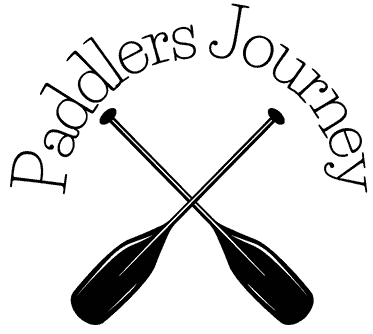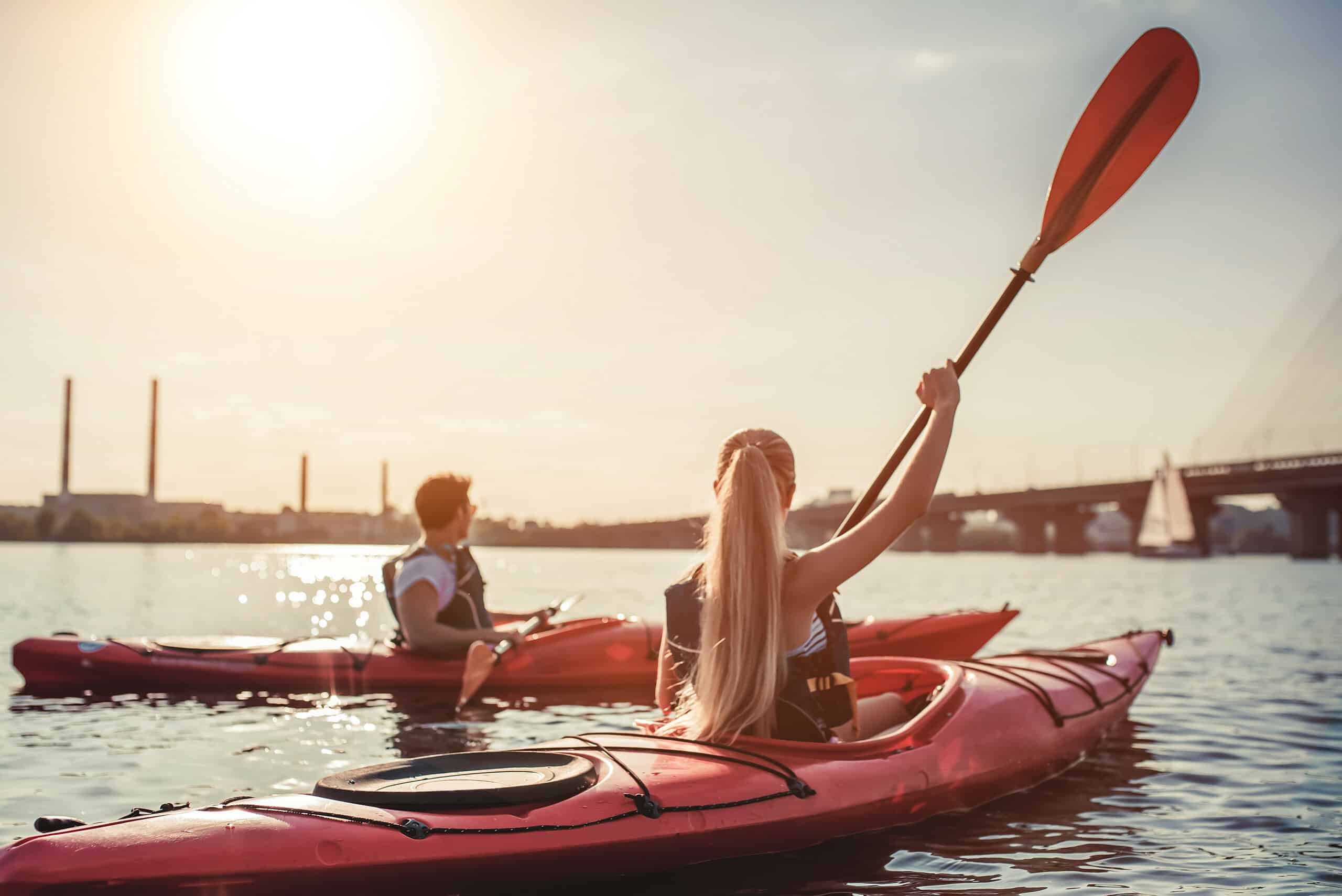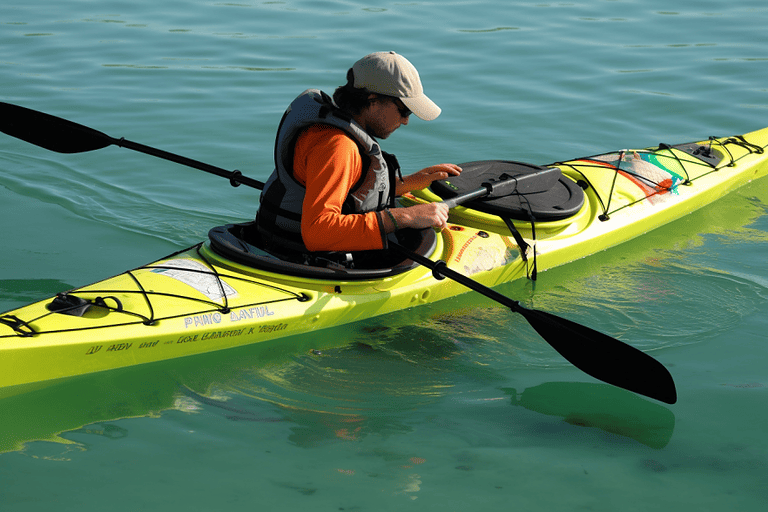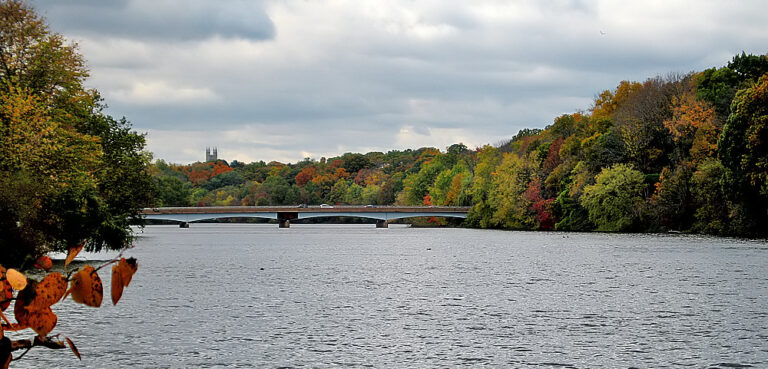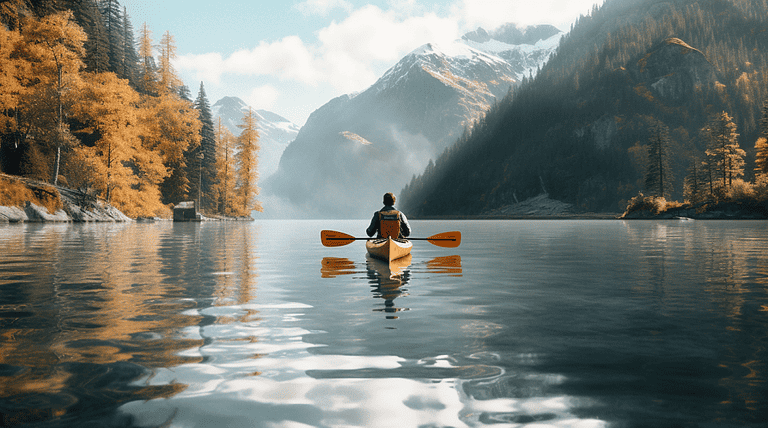Unlocking the Power of Flexibility In Kayaking on the Waters
Salutations, companions in the art of kayaking!
As a lifelong enthusiast, entranced by the rhythmic lullaby of the paddle striking the water and the comforting kayak cradle on the expansive ocean, I am deeply familiar with the adrenaline rush of carving a path through the waves. However, like every physical pursuit, the idyllic kayak adventure demands more than just enthusiasm. It’s a delicate dance that combines precise technique, fluid body mobility, dexterity, and flexibility.
Embracing Flexibility in Kayaking: The Understated Necessity
In the lexicon of physical fitness, flexibility transcends the mere ability to touch your toes. It signifies smooth movement, lessens the burden on your muscles, and enhances your overall performance. Regarding kayaking, flexibility plays the role of an invisible choreographer; it keeps your dance with the water graceful and harmonious. It allows for efficient paddling, easily navigates turns, and guarantees comfort even on protracted journeys. While your arm’s power propels you forward and your core balance maintains stability, flexibility ensures your performance remains seamless and hitch-free.
A Primer to Combatting Flexibility Conundrums
It’s imperative to remember that in the grand ballet of kayaking, we are not asserting dominance over the river; instead, we are integrating with its ebbs and flows. To become one with water, we must emulate its fluidity and flexibility. The ‘kayak Maestro is the embodiment of this principle, moving with a seamless grace that catches the eye and inspires awe. This level of mastery isn’t an unreachable zenith, but it does demand purposeful and concentrated effort.
Yoga and Stretching for Kayaking: The Key to Flexibility’s Gateway
If you’ve ever held the intricate Downward Dog position or grappled for balance in the Tree Pose, you know that yoga extends beyond a simple stretch routine. It’s a holistic approach to increase your body’s flexibility, enhance balance, and cultivate robust mind-body synchronization. As a kayaker, weaving yoga into your training regimen can significantly boost your kayaking flexibility, equipping you with the smooth, fluid movements required for a seamless ride on the waters.
Similarly, a dedicated routine of stretching exercises specifically designed for kayaking, can augment your overall body mobility. It prepares your muscles for the rigors of the water, ensuring they’re primed and capable of performing their best when navigating the waves.
Selecting the Right Kayak: A Harmonious Marriage of Comfort and Flexibility

Choosing the right kayak isn’t based solely on aesthetic appeal or the price tag. It’s about the intuitive feel, the fit, and the comfort it offers. Regarding kayak cockpit size, it’s about finding the ‘Goldilocks’ zone – not excessively spacious, not uncomfortably snug, but just right. A cockpit that fits well facilitates the flexibility to maneuver your body and paddle effectively.
And let’s not overlook the importance of the kayak seat and backrest. These two elements are pivotal in ensuring a comfortable and pleasurable kayaking experience. A well-cushioned seat that cradles your body can alleviate back strain, while an adjustable backrest can foster good posture throughout your aquatic journey. By selecting the right kayak, you’re making a conscious decision to prioritize comfort and flexibility, thereby taking a significant step toward mastering the art of kayaking.
Kayaking for Novices: Laying the Foundations for Skill Enhancement
Embarking on your kayaking journey can sometimes feel akin to being a fledgling bird on the edge of its nest, eyeing the vast expanse of the sky for the first time. Or in the context of our watery adventure, like a tiny kayak setting sail on the enormous, meandering river of learning. It’s not unusual to be awash with a sense of trepidation and daunted by the waves of the unknown. But let’s not forget, every seasoned ‘kayak Maestro’ was once a beginner navigating the same river of discovery.
Improving your kayaking skills is a layered journey, a step-by-step process that commences with understanding and mastering the rudiments of kayaking. Just as you can’t build a sturdy house without laying a solid foundation, you can’t become a skilled kayaker without getting a firm grip on the basics.
Begin by learning the correct way to hold your paddle. It’s your primary tool, your key to control the dance with the water. Understand the balance between a grip that is firm enough for control and relaxed enough to prevent fatigue. The subtlety in this balance often sets the beginners apart from the masters.
Next, unravel the secrets of the forward stroke. This is the fundamental move that will propel you through the water. Work on the placement of your paddle, the rotation of your torso, and the synchronization of your movements. Remember, it’s not about the strength of the stroke but the technique behind it.
Don’t stop at the forward stroke—venture into the world of sweep strokes, your ticket to the effective maneuvering of your kayak. Learn to harness the power of this wide, arcing stroke to steer your kayak, to navigate the waters with grace and finesse.
Then, there’s the brace, your safeguard against capsizing. Just as a tightrope walker uses a balance pole to prevent a fall, you use a brace to maintain stability in the water. Mastering this technique is like having an invisible safety net under your kayak.
But amidst all this learning, it’s crucial not to overlook one significant ingredient – patience. Just as a seed doesn’t sprout into a tree overnight, you won’t morph into a kayaking expert in a day. Understand that mastery is not a destination but a beautiful voyage filled with learning, experiences, and incremental victories.
So, dear novice kayaker, be patient with yourself, embrace the journey, and know that with every paddle stroke and wave crossed, you’re becoming a better version of your kayaking self. Let your love for the water fuel your patience; soon enough, you’ll see the fruits of your labor. The river of learning might seem vast and challenging, but remember, every river eventually leads to the ocean. Your ocean of kayaking mastery awaits!
Entering and Exiting a Kayak: Conquering the Subtle Dance
At an initial sweep, the act of getting in and out of a kayak is as simple as sitting in a chair or stepping out of it. But as anyone who has tried to perform this seemingly straightforward task will tell you, it’s akin to an intricate dance sequence: a dance that requires strength and technique and a healthy dose of flexibility and balance.
You see, stepping into your kayak isn’t just the prelude to your watery adventure; it’s the first verse of your kayaking symphony. It’s the point where you meet your dance partner and the kayak, and the delicate dance of entering and exiting begins. The rhythm, technique, and control are all part of the larger kayaking narrative.
And just like any dance, getting your steps right the first time or even the second can be tricky. But don’t fret, dear reader. With a splash of patience, a sprinkle of perseverance, and a healthy dose of practice, you’ll be sliding in and out of your kayak with the grace of a seasoned ballet dancer. You’ll be the envied ‘kayak Maestro’, nonchalantly maneuvering in and out of your vessel as onlookers gaze in awe.
Remember, the key to this dance lies in maintaining a firm grip on your kayak as if holding onto your dance partner. Treat the kayak as an extension of yourself and respect its balance just as you respect your own.
The next step is to master the art of centering your weight. Think of your kayak as a delicate see-saw. Any imbalance can disrupt harmony and leave you in the water. When getting in and out, aim to keep your weight as centralized as possible. The kayak’s stability is as crucial as your own.
Now, add the element of control, and measured movements. Quick, jerky movements can unsettle your kayak, causing it to wobble or tip. Instead, slow, deliberate actions will ensure that you and your kayak remain stable.
Imagine yourself as a heron, poised on one leg, moving with meticulous grace and precision. Apply that image to your kayak entry and exit. Yes, there might be a few stumbles and splashes along the way, but that’s all part of the dance.
And so, my fellow kayaking enthusiasts, remember this dance. Practice it, perfect it, and soon enough, you’ll be ready to hit the water immediately, sliding in and out of your kayak with a grace that would make any ballet dancer proud. But more than that, you’ll be setting the stage for your adventure, ready to embrace the thrill, the peace, and the unmatched beauty of kayaking.
Now, let’s get paddling! The water awaits.
The Exhilarating Health Perks of Kayaking
As we approach this kayaking narrative’s culmination, we must shed light on the salubrious advantages that kayaking proffers. It’s not merely an engaging pursuit or a gateway to a state of kayak Maestrodom but a cornucopia of health benefits wrapped in a package of exhilarating adventure.
Kayaking serves as a conduit to a vigorous workout regimen far from the mundanity of gym routines, thereby imbuing an element of fun into the pursuit of fitness. It strikes a unique blend of strength training, cardiovascular workout, and the intrinsic tranquility that fosters mental rejuvenation.
As you embark on your journey through the water, each paddle stroke is a symphony of your major muscle groups working in harmony. This not only aids in boosting muscle power but also contributes significantly to a comprehensive full-body workout. The rhythmic movement against the current tones your arms, shoulders, back, and even the often-overlooked core and lower body muscles. This is the magic of kayaking flexibility, turning a recreational activity into a holistic fitness routine.
But kayaking does not stop at muscle training. It fortifies your cardiovascular system, akin to the invigorating effect of an intense aerobic exercise. Each stroke becomes a heartbeat, pumping life through your veins, strengthening your heart, and enhancing your cardiovascular health.
However, the health benefits of kayaking are not confined to the corporeal domain alone. The psychological dimension is just as enticing. Picture this: you are gliding through the serene waters, a gentle breeze caressing your face, the rhythmic splash of your paddle the only sound breaking the silence. Such a tranquil environment is a potent stress reliever, naturally nudging your mind into peace and relaxation. It’s an immersive mindfulness experience, fostering a sense of calm and boosting mental wellness.
Moreover, the triumphant sensation that washes over you after navigating through the waterways, successfully overcoming the challenges thrown at you, significantly enhances your sense of self-efficacy. It’s a mental reward, a testament to your improving kayaking skills that uplifts your mood and leaves you yearning for the next session.
In essence, kayaking is not just about braving the waters or achieving the flexibility of a kayak Maestro. It’s a passport to a healthier you – physically, mentally, and emotionally. Each trip is a stride towards a fitter body, a calm mind, and a rejuvenated spirit. So, are you ready to embark on this wellness journey? Let the water be your guide.
Summary
Kayaking is an intricate ballet with the water, a dance that sings of freedom, exploration, and the joy of being one with nature. As any seasoned kayaker will tell you, the beauty of this dance lies not only in its rhythm but also in the subtle nuances that distinguish an amateur paddler from a true ‘kayak Maestro.
Just like the rigorous training that goes behind each seemingly effortless twirl of a ballerina, mastering kayaking demands not just raw strength or skill but a symphony of other factors. It calls for a blend of technique, body mobility, and, most critically, flexibility.
Choosing the right kayak, for instance, is like choosing the right dance partner. It must match your rhythm, mirror your moves, and balance your beats. The size of the kayak cockpit and the comfort of the seat and backrest are not just mattered of convenience but of performance, impacting your ability to navigate the water easily.
Practicing yoga and stretching exercises are crucial in this ballet on the water. They help shape your body into an instrument that bends and sways with the waves, allowing you to paddle with grace, endurance, and poise.
And then there’s the art of getting in and out of your kayak – a seemingly simple task that can become a stumbling block for many. Mastering this step is like nailing the perfect entry and exit on stage, an essential part of the performance often overlooked but never missed by the discerning eye.
The journey to becoming a kayak Maestro may seem daunting, but remember, every stroke of the paddle, every stretch of the muscles, every wave conquered takes you a step closer to mastering the dance. The path is filled with lessons, adventures, and myriad health benefits, all culminating in an experience that is as enriching as it is exhilarating.
So, gear up, step into your kayak, and let the dance begin. The rhythm of the water is calling, and with each paddle stroke, you’re one step closer to bending it like a true kayak Maestro!
FAQs
Q: How can I improve my flexibility for kayaking? A: Practicing yoga and regular stretching can significantly improve your flexibility for kayaking. They prepare your body for the physical strain and help you move smoothly and efficiently.
Q: How do I choose the right kayak? A: Choosing the right kayak depends on factors such as the kayak cockpit size and the comfort of the seat and backrest. A well-fitting kayak allows for more efficient paddling and better maneuverability, ultimately leading to a more enjoyable kayaking experience.
Q: What are some common kayaking techniques for beginners? A: Common kayaking techniques for beginners include the forward stroke, sweep stroke, and brace. These foundational techniques are essential for anyone starting their kayaking journey.
Q: What are the health benefits of kayaking? A: Kayaking is a full-body workout that engages all your major muscle groups. It boosts cardiovascular health, improves muscle strength, and significantly enhances mental wellness by providing a calming and relaxing environment.
Q: How can I get in and out of a kayak more easily? A: To get in and out of a kayak more easily, ensure you maintain a firm grip, center your weight, and keep your movements slow and controlled. Practicing these steps can help you master the process.
And there you have it, fellow kayaking enthusiasts. Remember, flexibility is not a destination, it’s a journey. Keep practicing, paddling, and most importantly, enjoy the ride!
